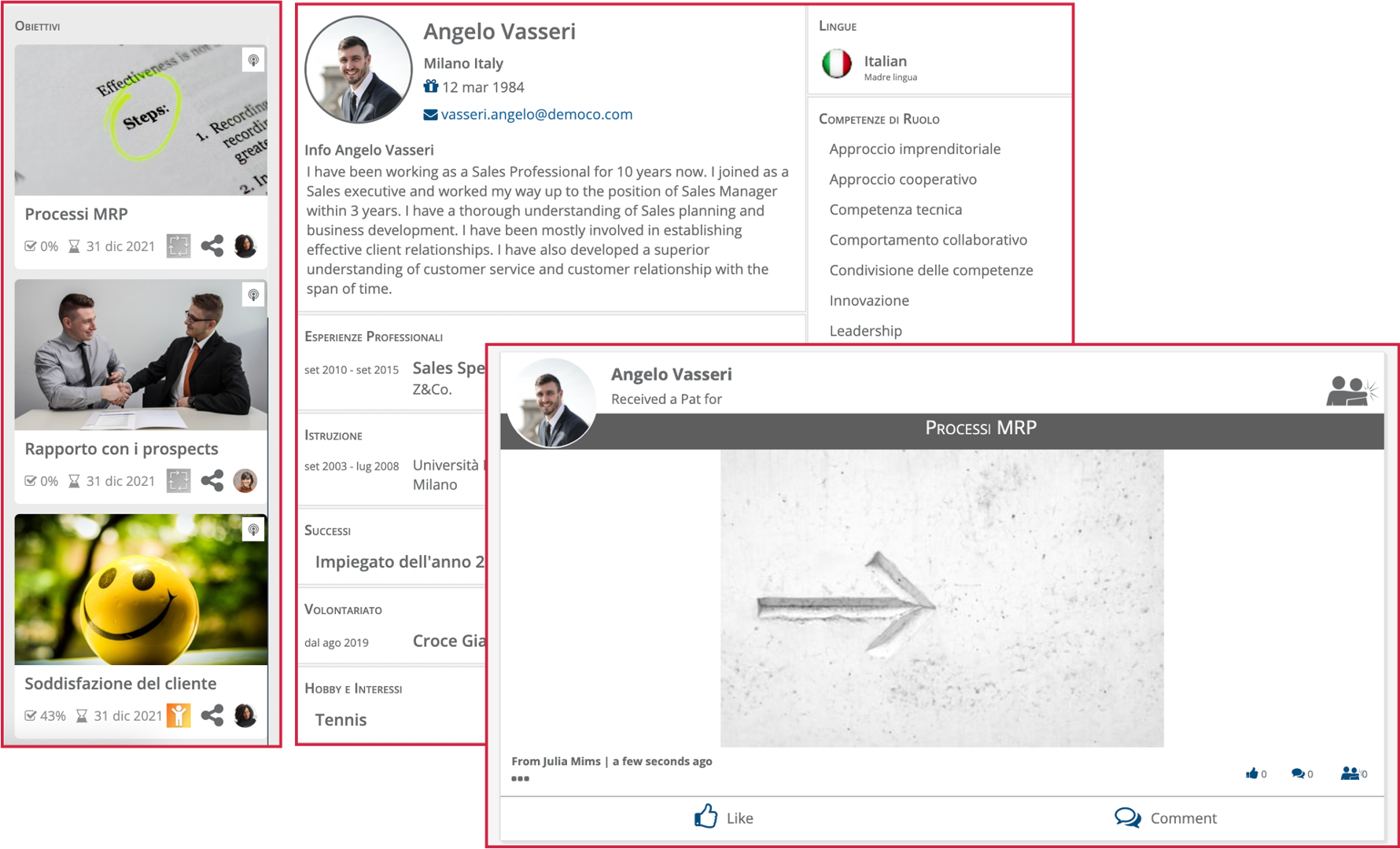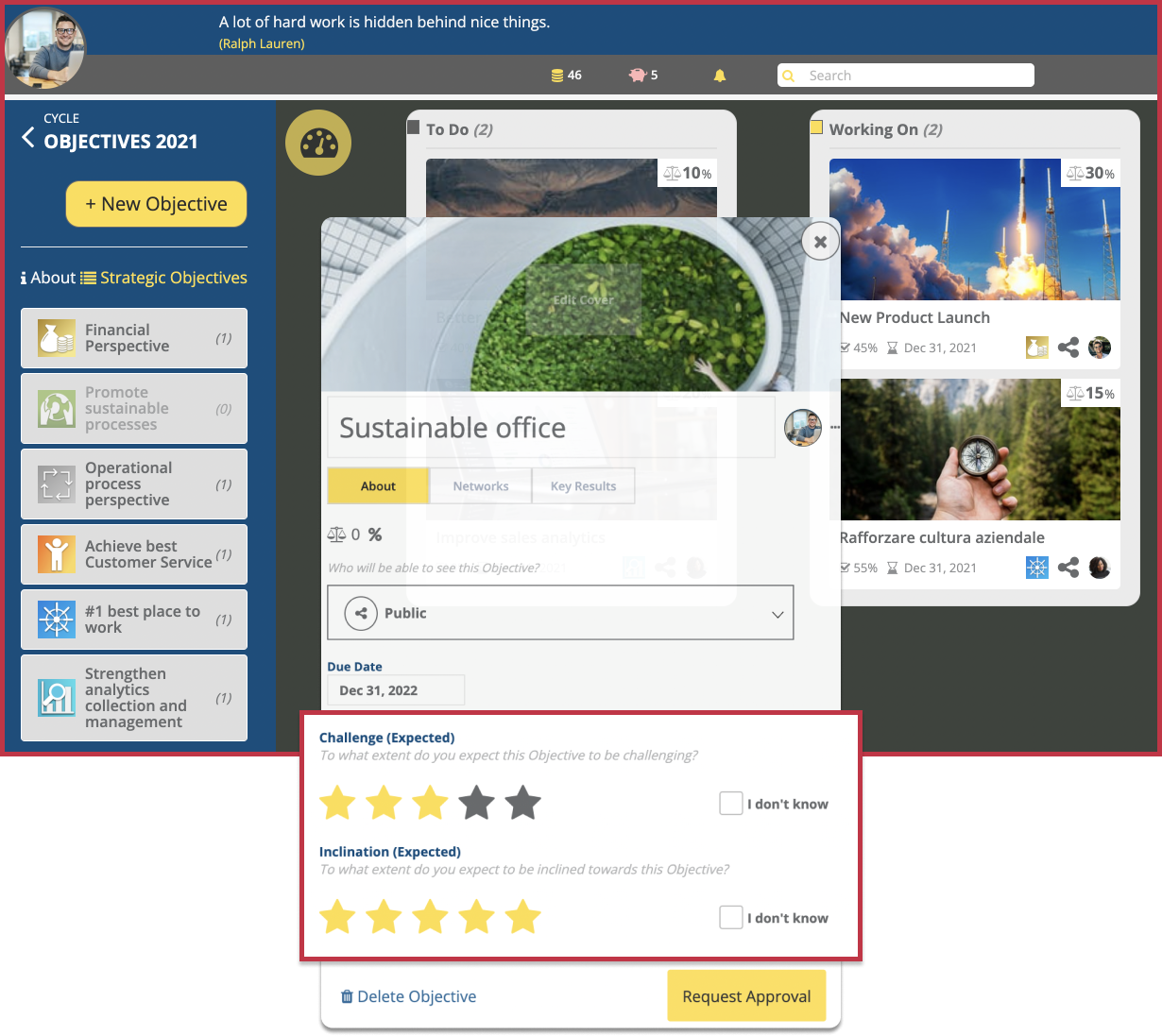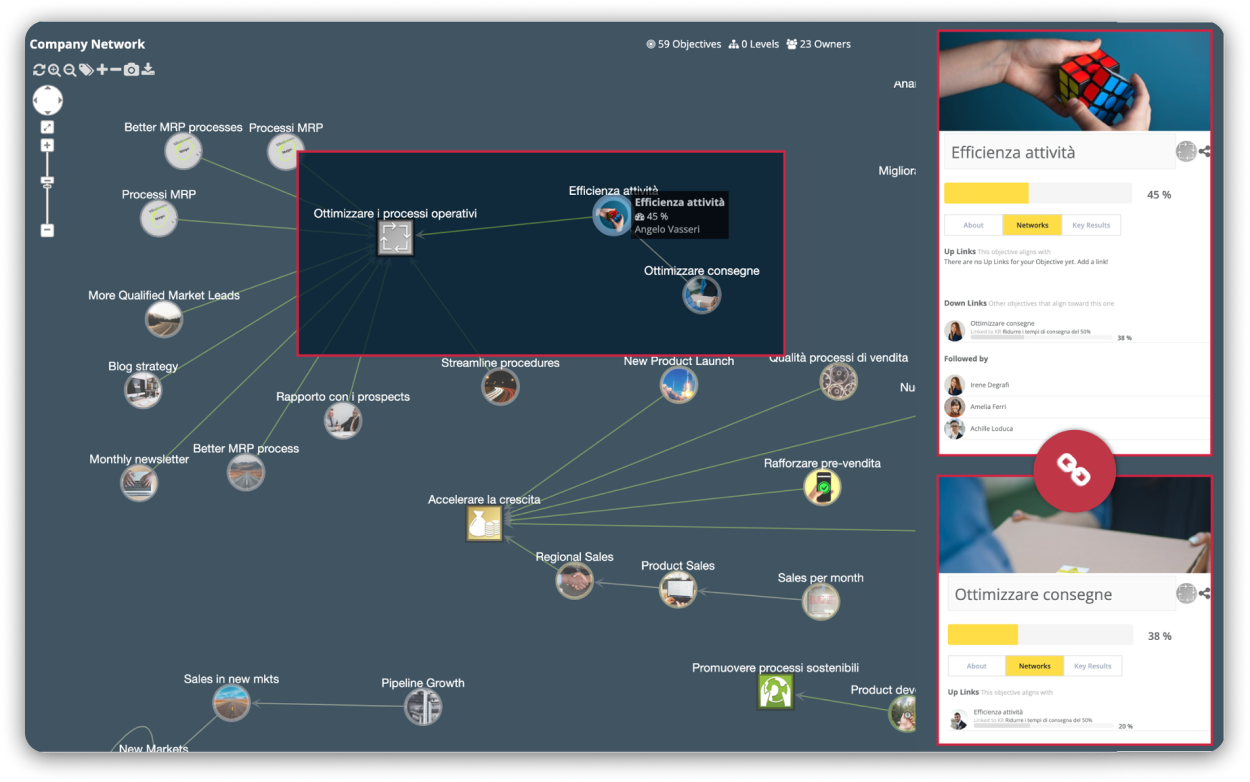The OKR goal-setting framework
Objectives to aim high.
Key Results to measure progress.
Tracking progress with OKRs
Transparency
OKRs that are shared help monitor progress, exchange feedback, and align with the company’s mission and values.
Alignment
OKRs can be linked with those of colleagues and aligned with the company’s strategic goals, creating the network of OKRs.
Innovation
The OKR definition, detached from monetary rewards, encourages employees to share ideas and engage in setting ambitious goals.
Execution
Regular OKR reviews and continuous feedback help employees course-correct, improve, and deploy the strategy successfully.
OKRs with PatPat360
Strategic goals
Objectives Cycles support employees in defining OKRs that align with the organization and team’s strategic goals.
They make it easier to organize the work around the strategic priorities and to regularly track progress.

Public OKRs & more
Public objectives foster transparency and alignment, helping everyone focus on what matters the most.
Everyone can visit their colleagues’ profiles, know what they’re working on and follow OKRs to stay updated on the progress.
Managers and employees can also define objectives with limited visibility to meet the business needs.
Social recognition
An OKR goal-setting system combined with social recognition features encourages employees to set and achieve ambitious goals.
Celebrating big and small wins makes employees feel valued at work.


Questions about our OKR module?
OKR vs MBO
OKRs build on the MBO approach to overcome its limits
Management by Objectives
What
Yearly
Confidential
Top-down
Tied to Monetary Incentives
Risk-adverse
Objectives & Key Results
What & How
Quarterly
Transparent
~50% Bottom-up
Feedback & Recognition
Aspirational
Would you like to know more about the OKR framework? Let’s have a chat!


